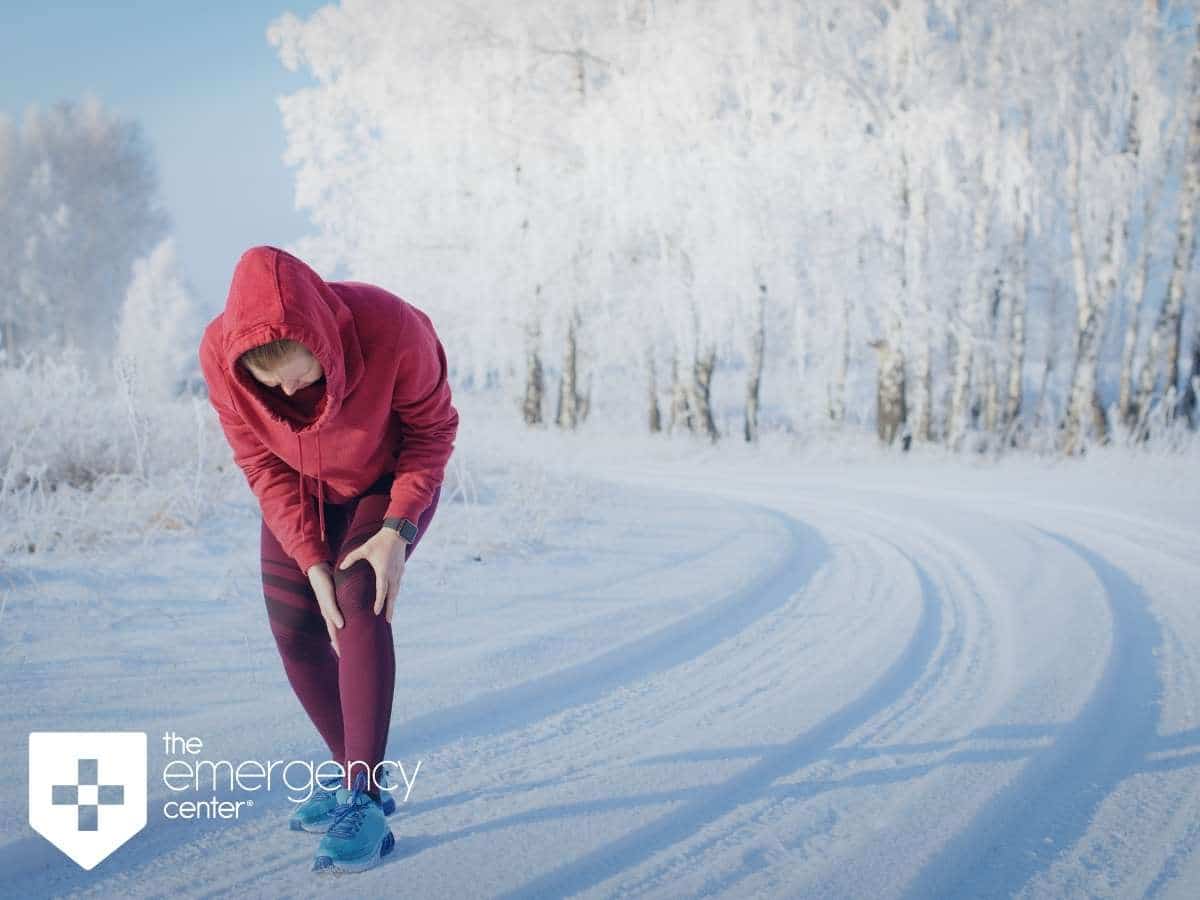Common Winter Injuries
Injuries With Increased Risk During Winter Season
As with any season, the coldest months present their own set of potential winter injuries. Winter is here, and that means people should consider being extra cautious both inside and outside. Major winter storms not only present human health hazards and dangers, they can also make it more difficult to get to an emergency room due to icy roads.
Cold weather forces people to make adjustments necessary to adapt to their surroundings. Since many people do not spend much of the year fighting these harsh conditions, their risk of injury may increase.

Watch Out For Slips & Falls During The Winter
There are many conditions during the winter which can present a falling hazard, the most obvious being icy surfaces. Icy surfaces make people vulnerable to slips and falls. Other falling factors include climbing ladders for hanging holiday decorations, or falls from rooftops while hanging holiday lighting. Injuries from falls include bruising, head injuries, brain injuries, concussions, ankle sprains, muscle strains, and broken bones. Injuries from falls are more common during the winter, and particularly during the holidays. Be sure to take extra care when walking on icy surfaces, hanging holiday decorations, and putting up holiday lighting on rooftops.
Shoveling Snow Can Result In Back Injuries
During the snowier seasons, many people shovel snow from their driveways to keep their garages accessible. If someone is shoveling snow without using proper form, they may end up suffering from neck and back injuries. These injuries can be serious, and are sometimes permanent. Always be sure to use proper form when engaging in heavy lifting.
Cold Climate Can Lead To Cardiovascular Risks
Blood pressure and cholesterol levels rise during colder months, in part because it is essential for warming the body to adjust to the drops in temperature. However, elevated blood pressure and cholesterol levels both contribute to the risk of a heart attack. Due to colder temperatures, the heart has to work harder to regulate blood flow, but the extra work the heart puts in elevates the risk of a heart attack. For people who already have heart conditions, the chances of a heart attack increase even further during winter. Cold weather also increases the odds of a blood clot, furthering the risk of both a heart attack and a stroke.
When outside in the cold, make sure to take breaks from the weather to warm up and give the heart a break. If there are any signs of a heart attack, such as a sudden tightening of the chest, chest pain, or shortness of breath, seek medical attention immediately.
Hypothermia Is Far More Common In The Winter
The human body works to maintain a body temperature of about 98.6 degrees Fahrenheit as often as possible. However, when exposed to colder and harsher environments, body temperature is significantly reduced. Hypothermia occurs when body temperature falls below 95 degrees. During this time, there are warning signs such as shivering, increased breathing, impaired thinking, and increased pulse. The body warms itself up during hypothermia by shivering, but shivering reduces as hypothermia progresses. If left untreated, the heart will eventually stop beating, resulting in death.
To prevent hypothermia, take steps to keep the body warm. When outdoors during the colder seasons, wear warm protective layers and keep skin surfaces covered as much as possible. Drink plenty of warmed fluids such as tea, coffee, or broth. Now and then, take a break from the cold by going inside to warm up. If symptoms of hypothermia begin to show, get inside and warm up immediately.
Heat Sources & Carbon Monoxide Poisoning
Carbon monoxide is an odorless, invisible gas that emits from carbon-filled fumes. Examples of carbon monoxide sources include car exhaust fumes, fireplaces, furnaces, and kerosene heaters. The gas is a silent killer because it is almost impossible to detect without a device. It slowly enters the bloodstream, causing problems with the delivery of oxygen to the body and causes brain and heart problems. During the winter season, people rely on heat sources more often, and exposure to carbon monoxide increases. Never warm up a car while it is in a closed garage, do not remain near the fireplace for too long, and keep far proximity to other fuel-burning heaters.
Contact Our Freestanding ER In Case Of Winter Injuries
Winter is a time of year that can be comforting. It is a time where families get together and feast on their favorite comfort foods. It is also a time of year that can cause certain season-related injuries, which can easily be prevented. By understanding the risks of injury associated with the colder seasons this year, peace of mind will make winter safer and less stressful.
The Emergency Center is here for you if you or your family needs emergency care. Never second guess whether or not an injury is severe enough to require emergency attention. The Emergency Center provides up to 23 hours of Observation and offers 24/7 care with NO WAITING. Visit The Emergency Center’s convenient 24-hour location in San Antonio.
The Emergency Center
San Antonio
11320 Alamo Ranch Pkwy
San Antonio, TX 78253
Phone: 210-485-3644



